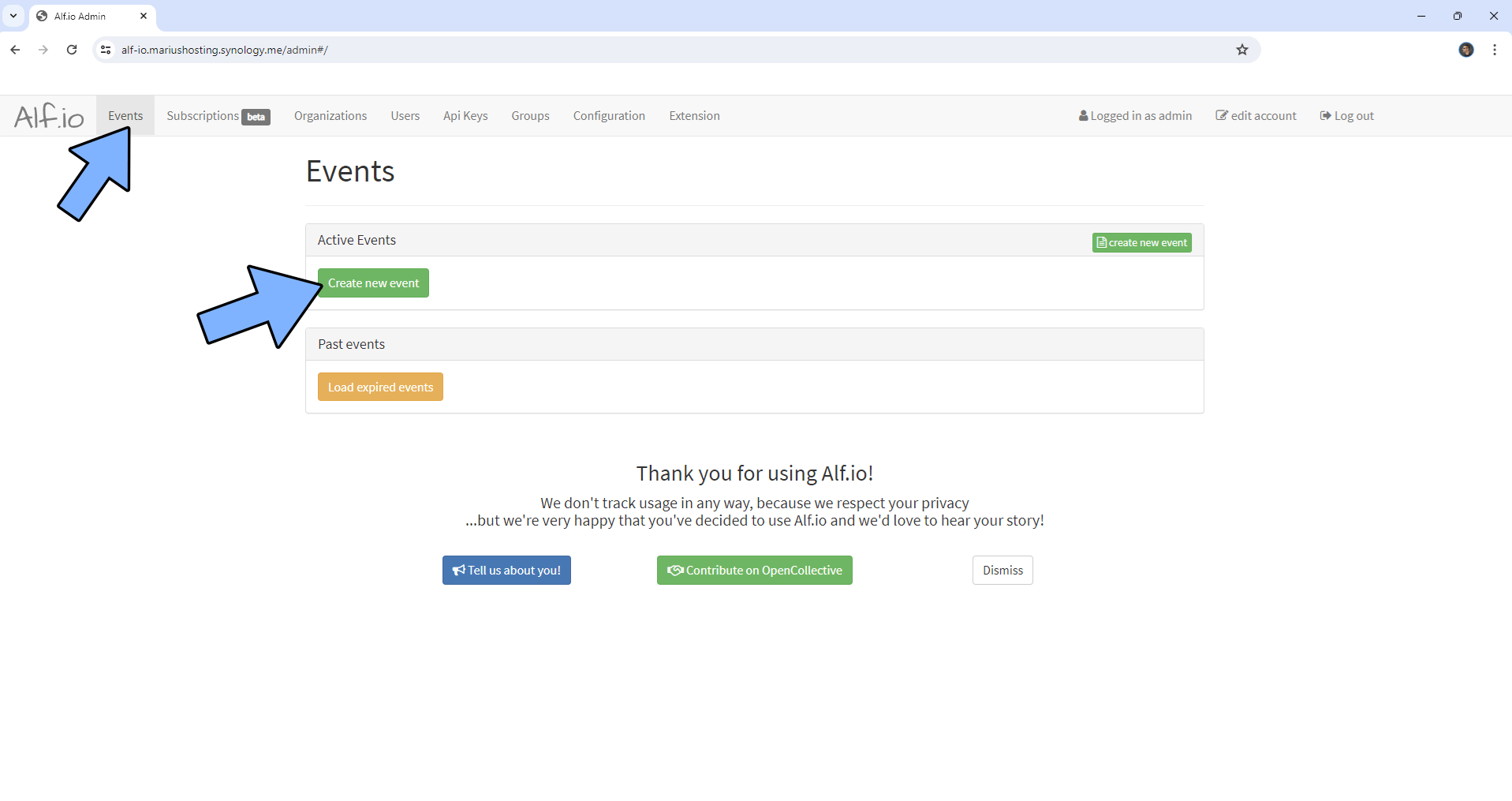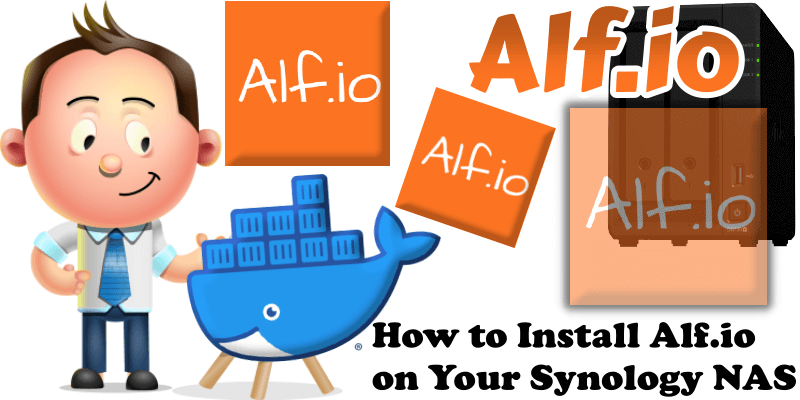
Alf.io is a free and open source ticket reservation system, event attendance management system, developed for event organizers who care about privacy, security and fair pricing policy for their customers. Alf.io is an alternative to Calcom. In this step by step guide I will show you how to install Alf.io on your Synology NAS using Docker and Portainer.
This guide works perfectly with the latest Alf.io v2.0-M5-2502 release.
STEP 1
Please Support My work by Making a Donation.
STEP 2
Install Portainer using my step by step guide. If you already have Portainer installed on your Synology NAS, skip this STEP. Attention: Make sure you have installed the latest Portainer version.
STEP 3
Make sure you have a synology.me Wildcard Certificate. Follow my guide to get a Wildcard Certificate. If you already have a synology.me Wildcard certificate, skip this STEP.
STEP 4
Go to Control Panel / Login Portal / Advanced Tab / click Reverse Proxy. Follow the instructions in the image below.
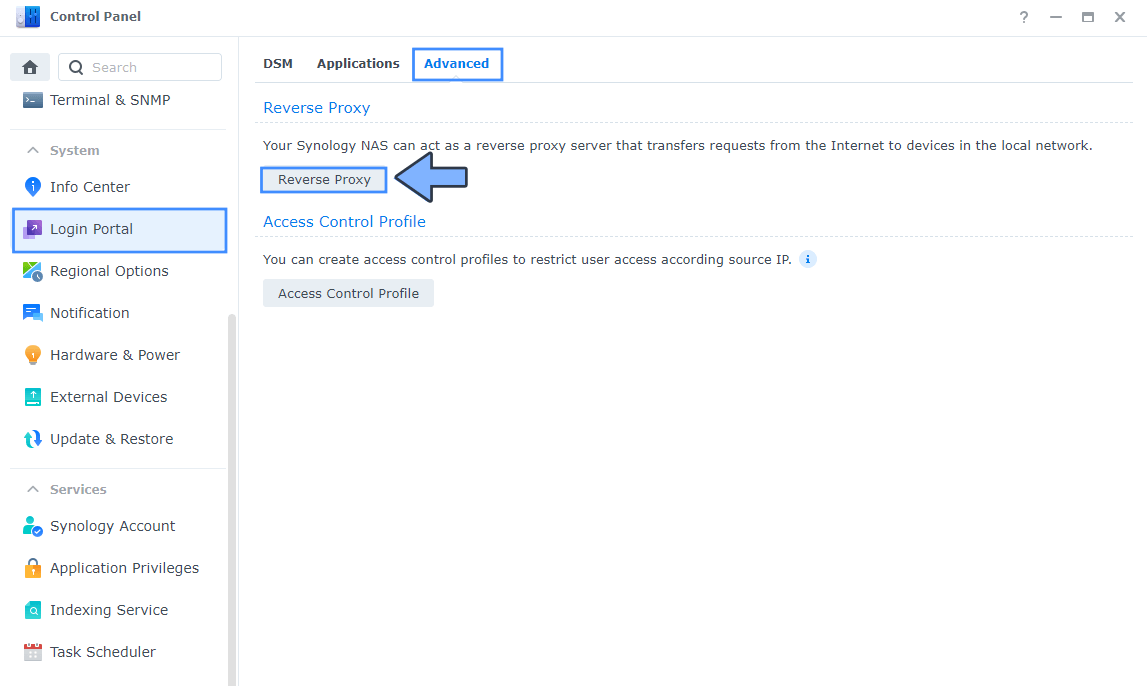
STEP 5
Now click the “Create” button. Follow the instructions in the image below.
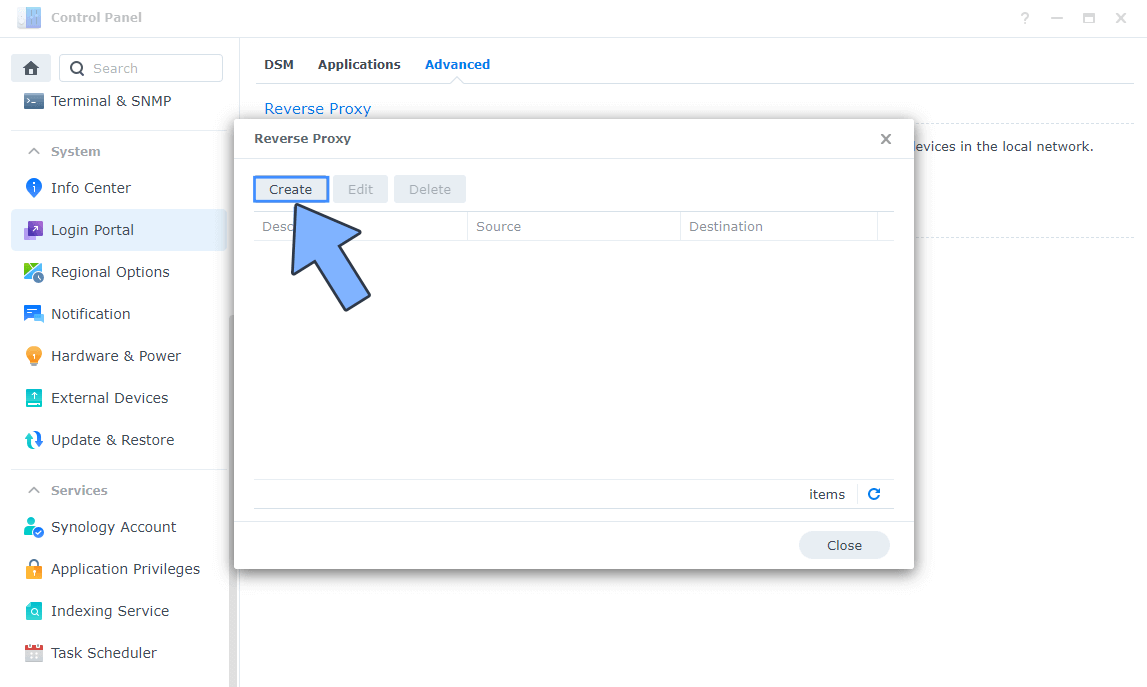
STEP 6
After you click the Create button, the window below will open. Follow the instructions in the image below.
On the General area, set the Reverse Proxy Name description: type in Alf-io. After that, add the following instructions:
Source:
Protocol: HTTPS
Hostname: alf-io.yourname.synology.me
Port: 443
Check Enable HSTS
Destination:
Protocol: HTTP
Hostname: localhost
Port: 7189
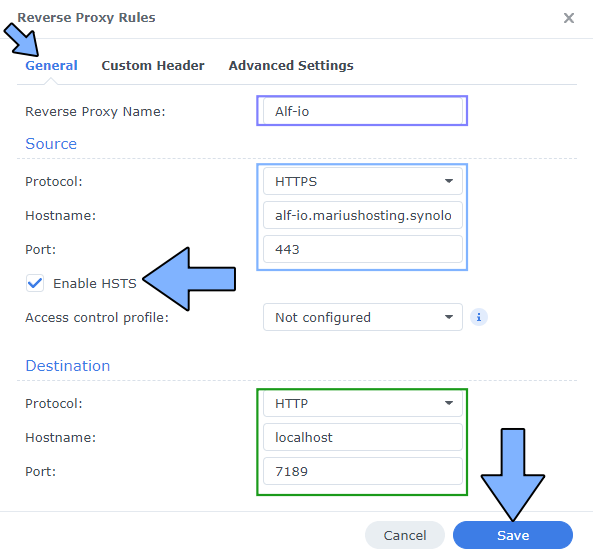
STEP 7
On the Reverse Proxy Rules click the Custom Header tab. Click Create and then, from the drop-down menu, click WebSocket. After you click on WebSocket, two Header Names and two Values will be automatically added. Click Save. Follow the instructions in the image below.

STEP 8
Go to Control Panel / Network / Connectivity tab/ Check Enable HTTP/2 then click Apply. Follow the instructions in the image below.
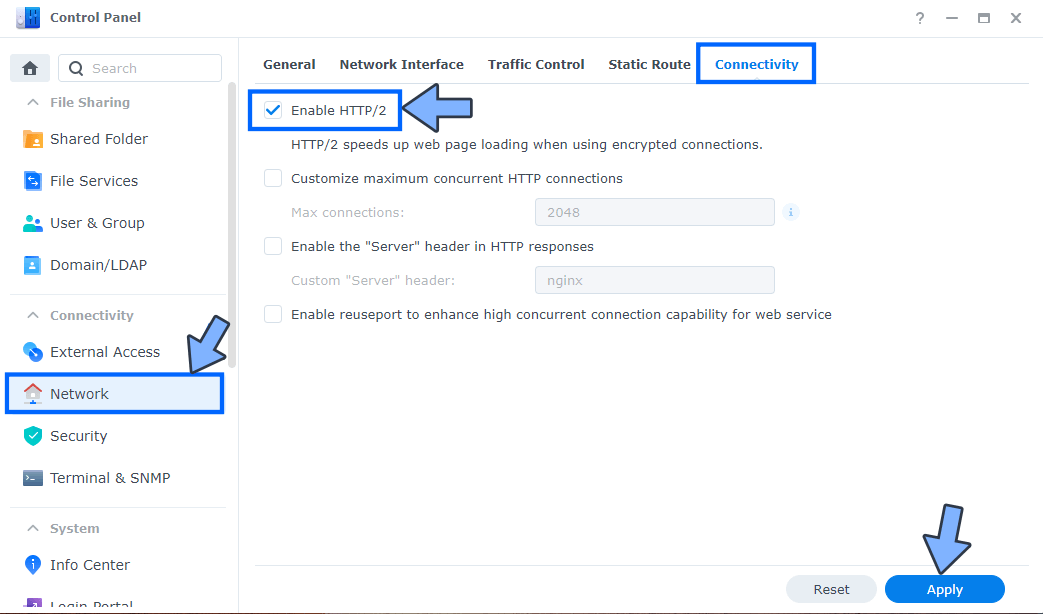
STEP 9
Go to Control Panel / Security / Advanced tab/ Check Enable HTTP Compression then click Apply. Follow the instructions in the image below.
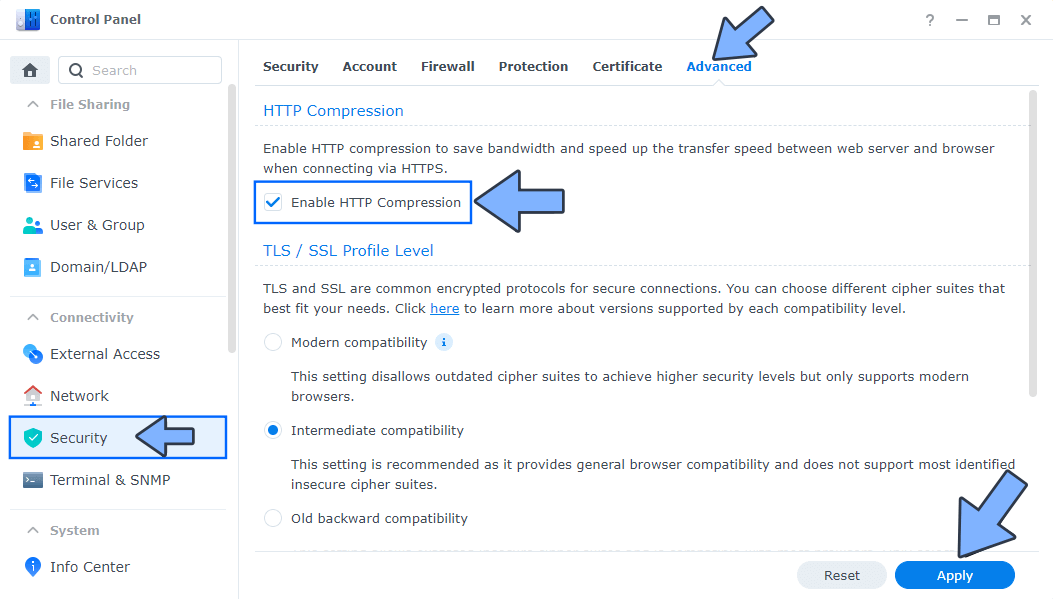
STEP 10
Go to File Station and open the docker folder. Inside the docker folder, create one new folder and name it alf-io. Follow the instructions in the image below.
Note: Be careful to enter only lowercase, not uppercase letters.
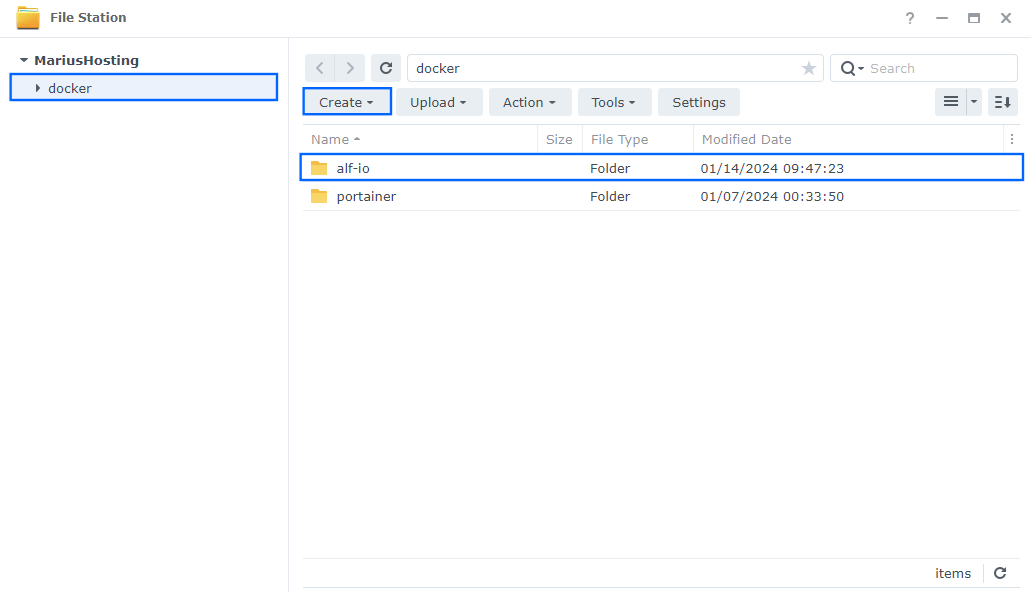
STEP 11
Follow my step by step guide on how to activate SMTP for your Gmail account. This step is mandatory. Note: If you don’t want to use the easiest way for SMTP with Google and you already have SMTP details from your own Mail Server, you can just skip this STEP and use your personalized email SMTP details instead. You will need these details at STEP 20.
STEP 12
Log into Portainer using your username and password. On the left sidebar in Portainer, click on Stacks then + Add stack. Follow the instructions in the image below.

STEP 13
In the Name field type in alfio. Follow the instructions in the image below.
services:
db:
image: postgres:16
container_name: Alf-io-DB
hostname: alf-io-db
security_opt:
- no-new-privileges:true
healthcheck:
test: ["CMD", "pg_isready", "-q", "-d", "alf-io", "-U", "alf-iouser"]
timeout: 45s
interval: 10s
retries: 10
volumes:
- /volume1/docker/alf-io:/var/lib/postgresql/data:rw
environment:
POSTGRES_DB: alf-io
POSTGRES_USER: alf-iouser
POSTGRES_PASSWORD: alf-iopass
restart: on-failure:5
alf-io:
image: alfio/alf.io:latest
container_name: Alf-io
hostname: alf-io
security_opt:
- no-new-privileges:true
ports:
- 7189:8080
environment:
POSTGRES_PORT_5432_TCP_PORT: 5432
POSTGRES_PORT_5432_TCP_ADDR: alf-io-db
POSTGRES_ENV_POSTGRES_DB: alf-io
POSTGRES_ENV_POSTGRES_USERNAME: alf-iouser
POSTGRES_ENV_POSTGRES_PASSWORD: alf-iopass
SPRING_PROFILES_ACTIVE: jdbc-session
restart: on-failure:5
depends_on:
db:
condition: service_healthy

STEP 14
Scroll down on the page until you see a button called Deploy the stack. Click on it. Follow the instructions in the image below. The installation process can take up to a few minutes. It will depend on your Internet speed connection.
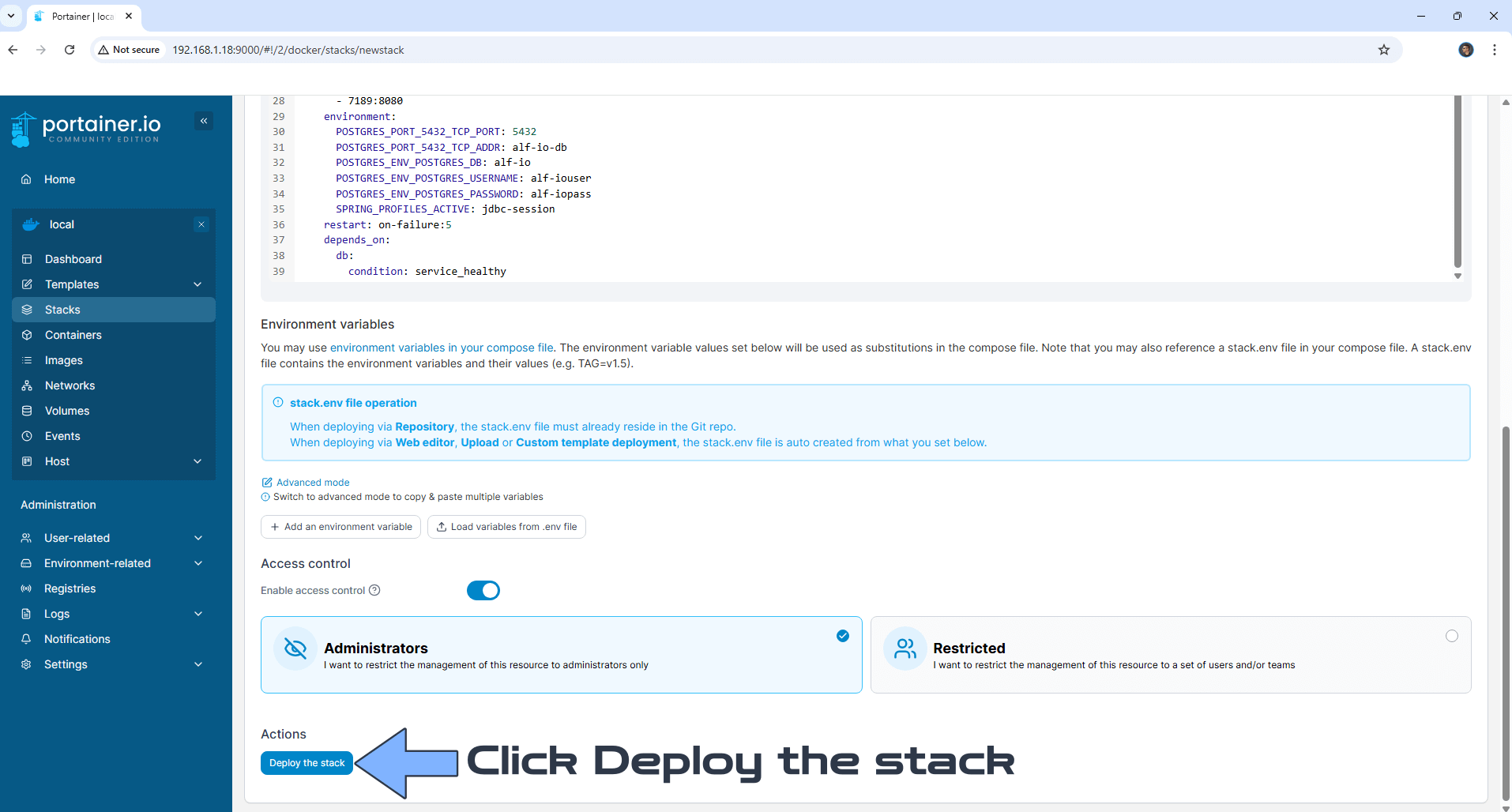
STEP 15
If everything goes right, you will see this message at the top right of your screen: “Success Stack successfully deployed“.
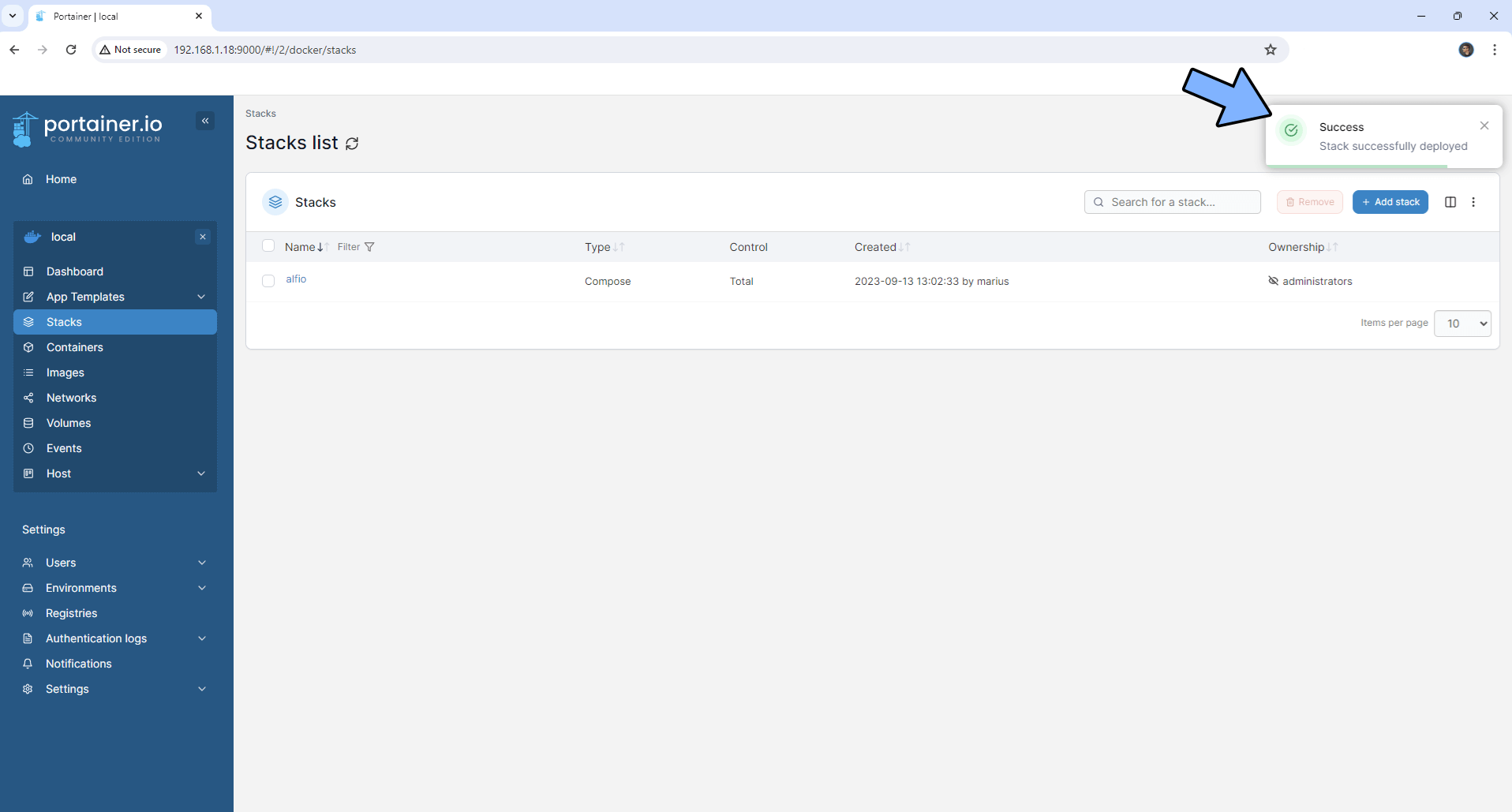
STEP 16
On the left sidebar in Portainer, click Containers. Identify your Alf-io instance, then click on the little log icon. Follow the instructions in the image below.
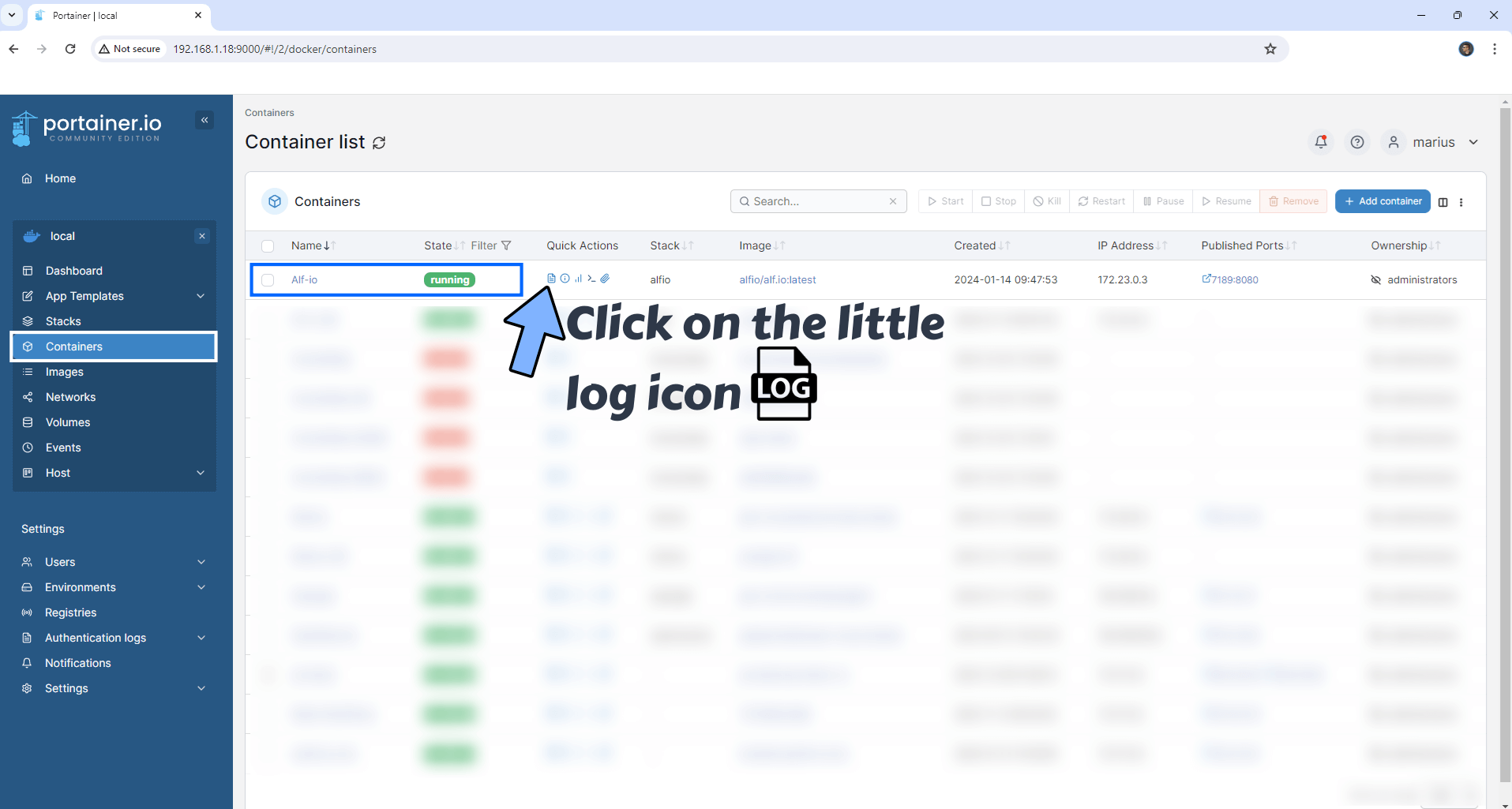
STEP 17
Copy your auto-generated admin password credentials. Follow the instructions in the image below. You will need this password later at STEP 19.
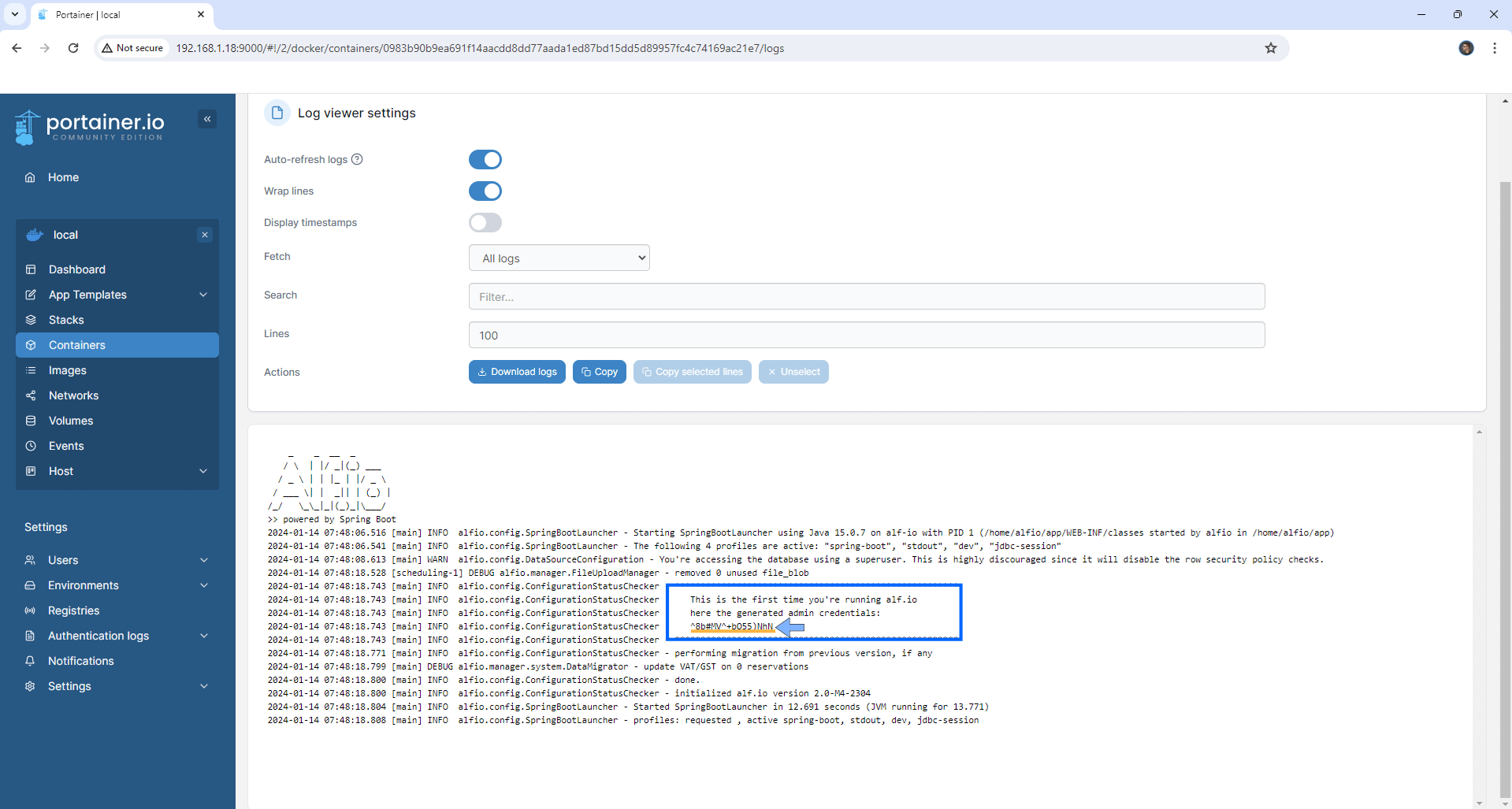
STEP 18
🟢Please Support My work by Making a Donation. Almost 99,9% of the people that install something using my guides forget to support my work, or just ignore STEP 1. I’ve been very honest about this aspect of my work since the beginning: I don’t run any ADS, I don’t require subscriptions, paid or otherwise, I don’t collect IPs, emails, and I don’t have any referral links from Amazon or other merchants. I also don’t have any POP-UPs or COOKIES. I have repeatedly been told over the years how much I have contributed to the community. It’s something I love doing and have been honest about my passion since the beginning. But I also Need The Community to Support me Back to be able to continue doing this work.
STEP 19
Now open your browser and type in your HTTPS/SSL certificate like this https://alf-io.yourname.synology.me/authentication that you have previously created at STEP 6. In my case it’s https://alf-io.mariushosting.synology.me/authentication If everything goes right, you will see the Alf.io login page. Type in the default Username which is admin and the auto-generated password that you have previously copied at STEP 17. Click Login. Follow the instructions in the image below.
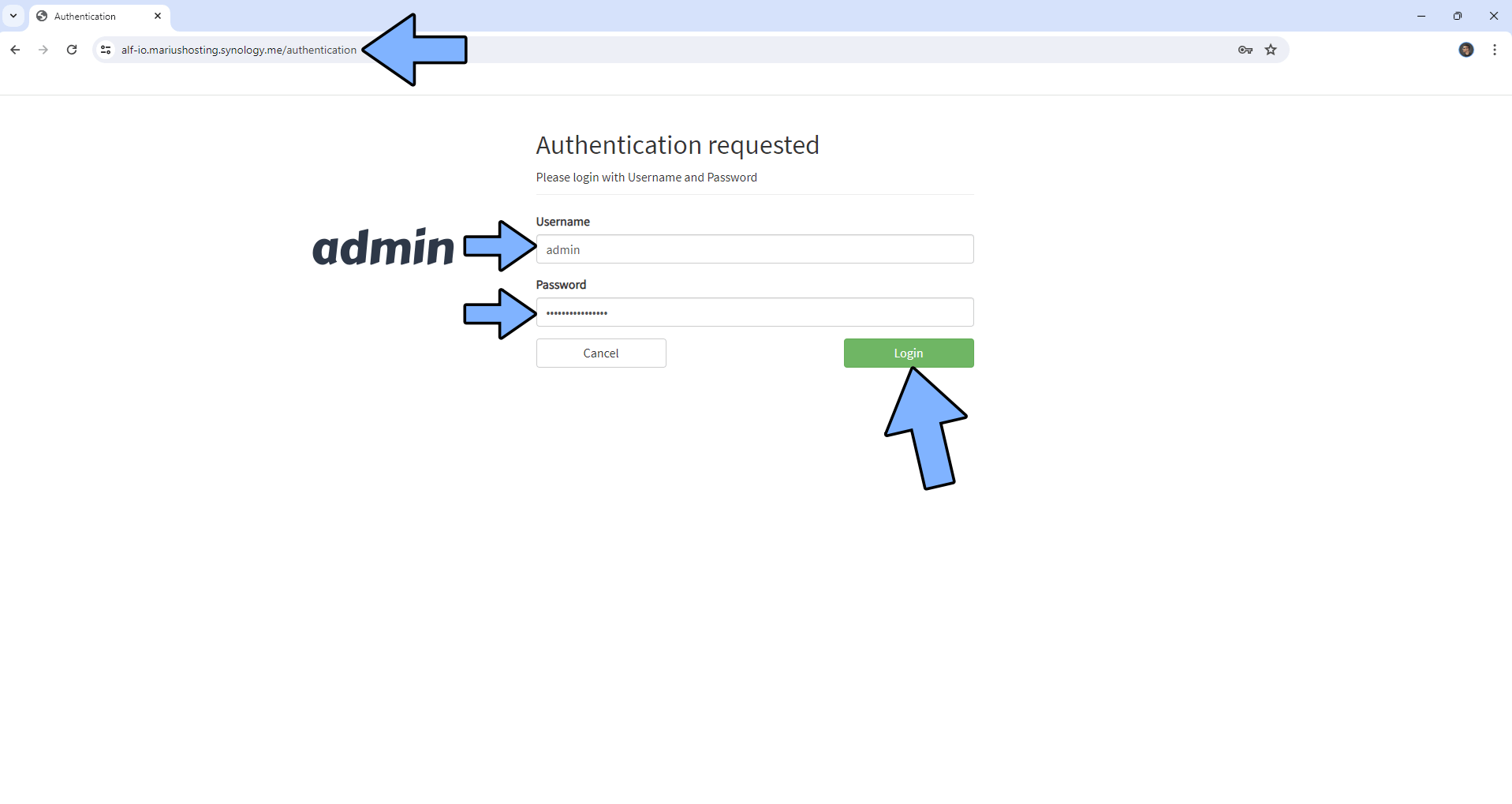
STEP 20
Add your SMTP details, then click save. Follow the instructions in the image below. Note: For Gmail details, you should have completed the instructions at STEP 11.
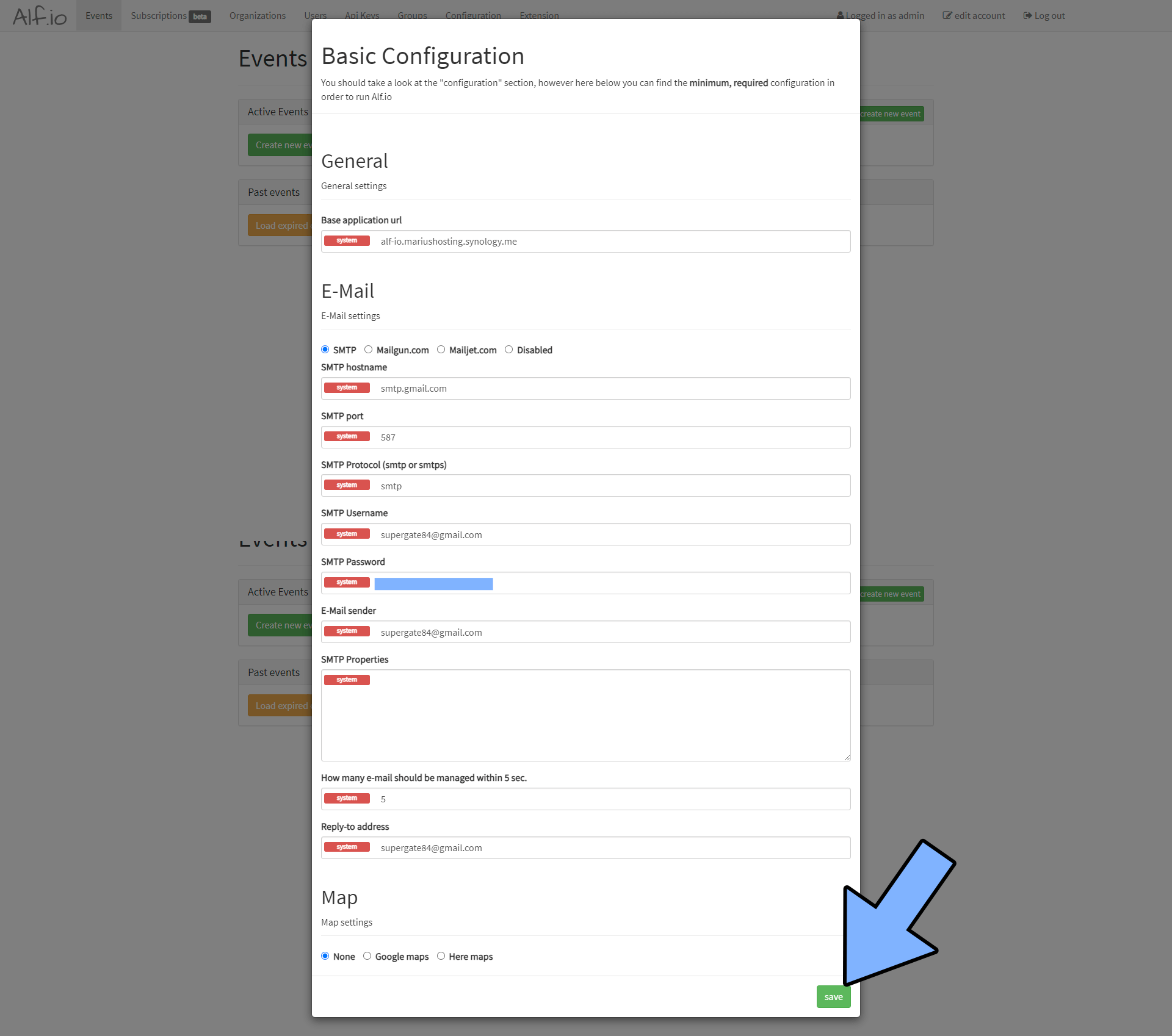
STEP 21
Click the Organizations tab, then click +add new to add your first organization. Follow the instructions in the image below.
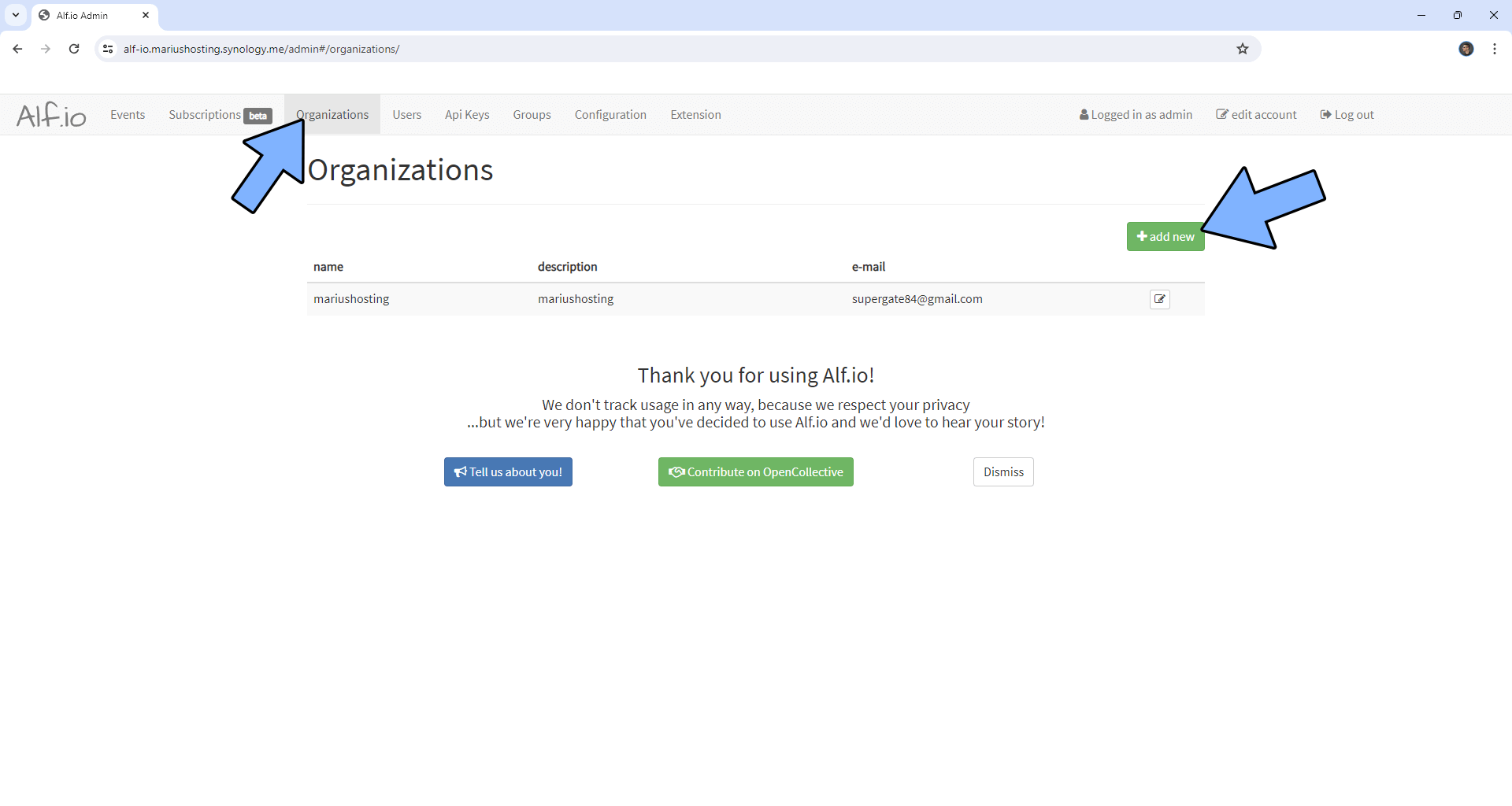
STEP 22
Click the Events tab, then Create new event to create your new event. Follow the instructions in the image below.

STEP 23
Add the details for your Event, then click Save. Follow the instructions in the image below.
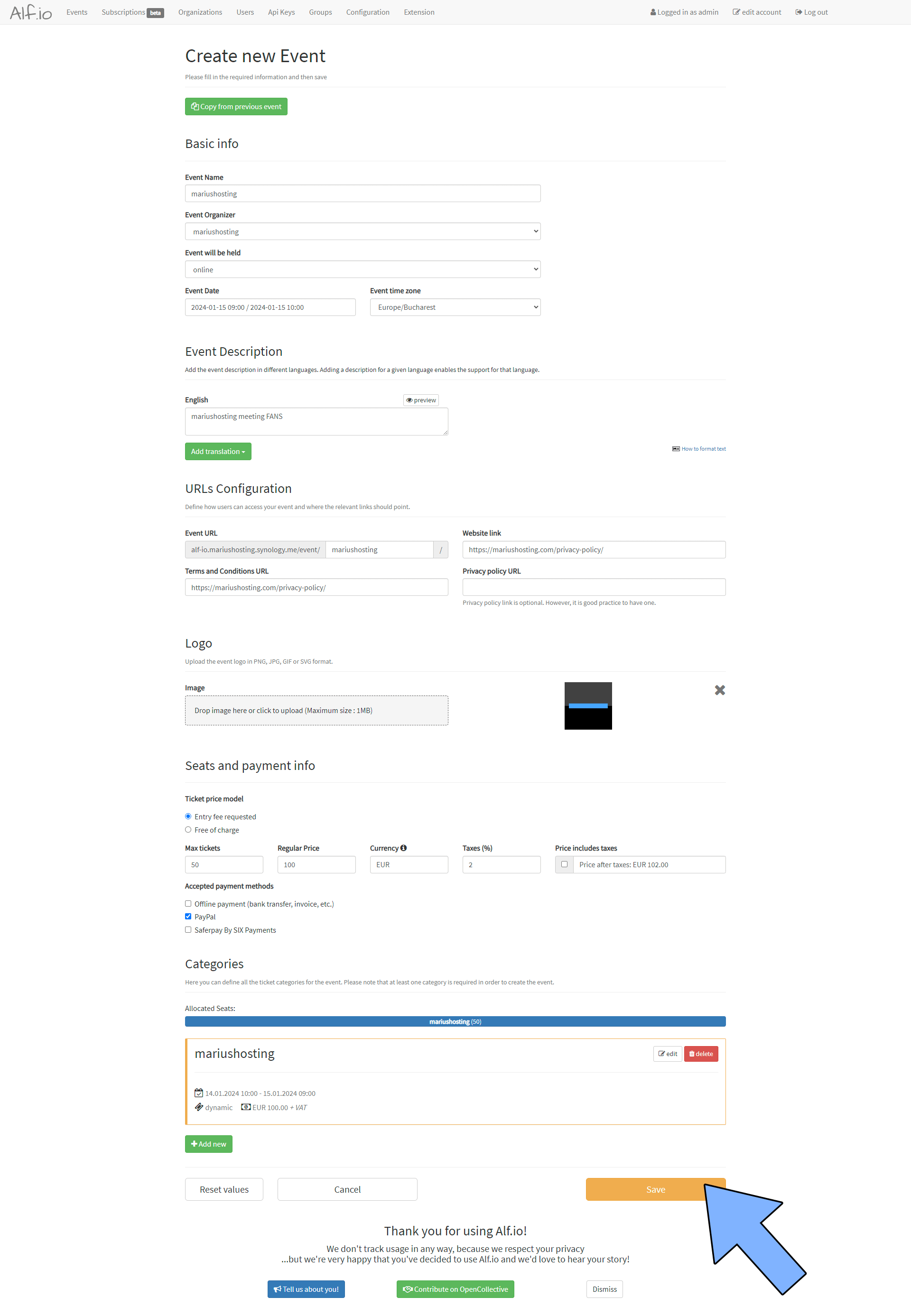
STEP 24
Click Publish now to make your event accessible online. Follow the instructions in the image below.
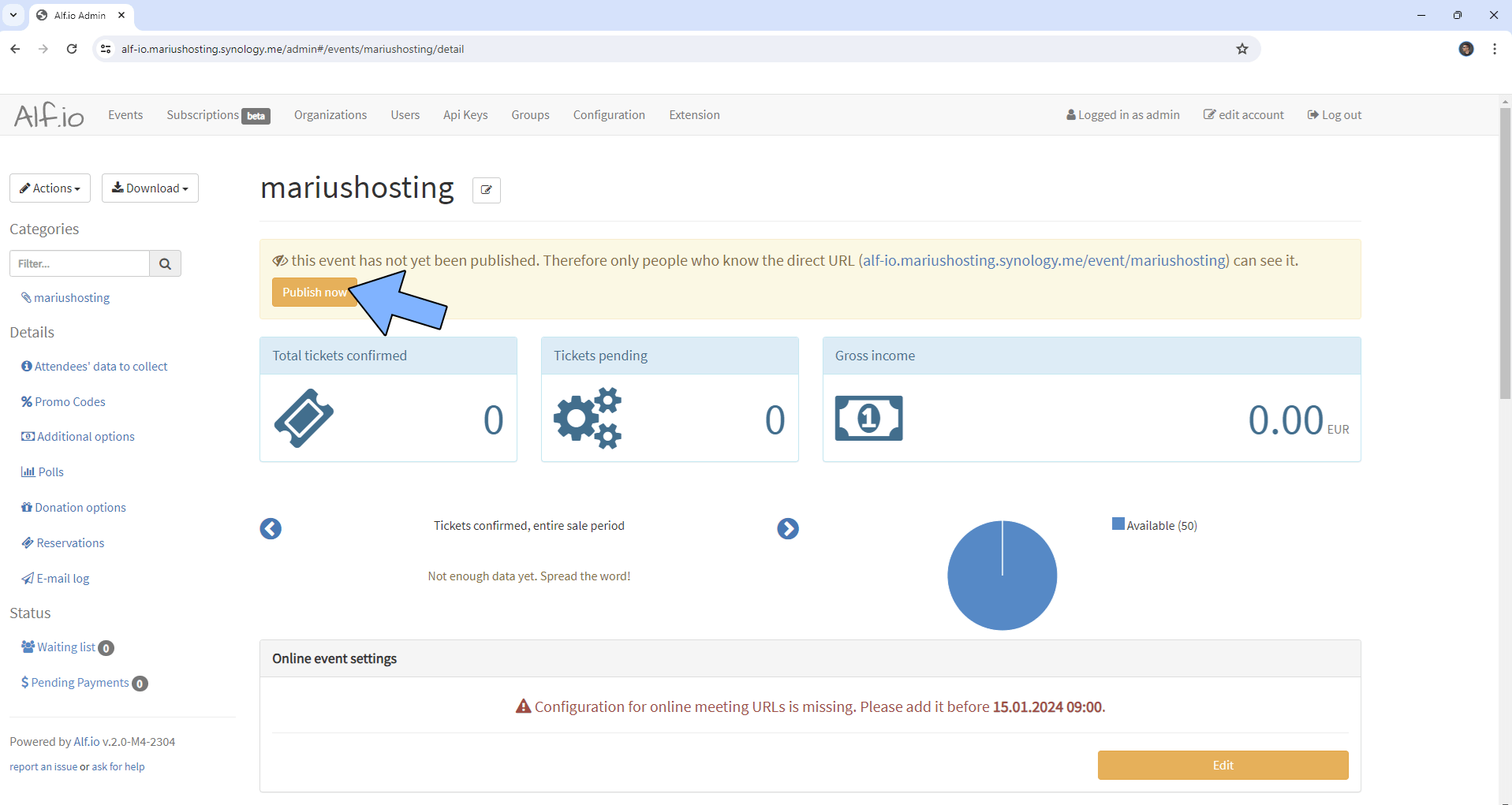
STEP 25
Your Event link at a glance! Share with your potential customers!
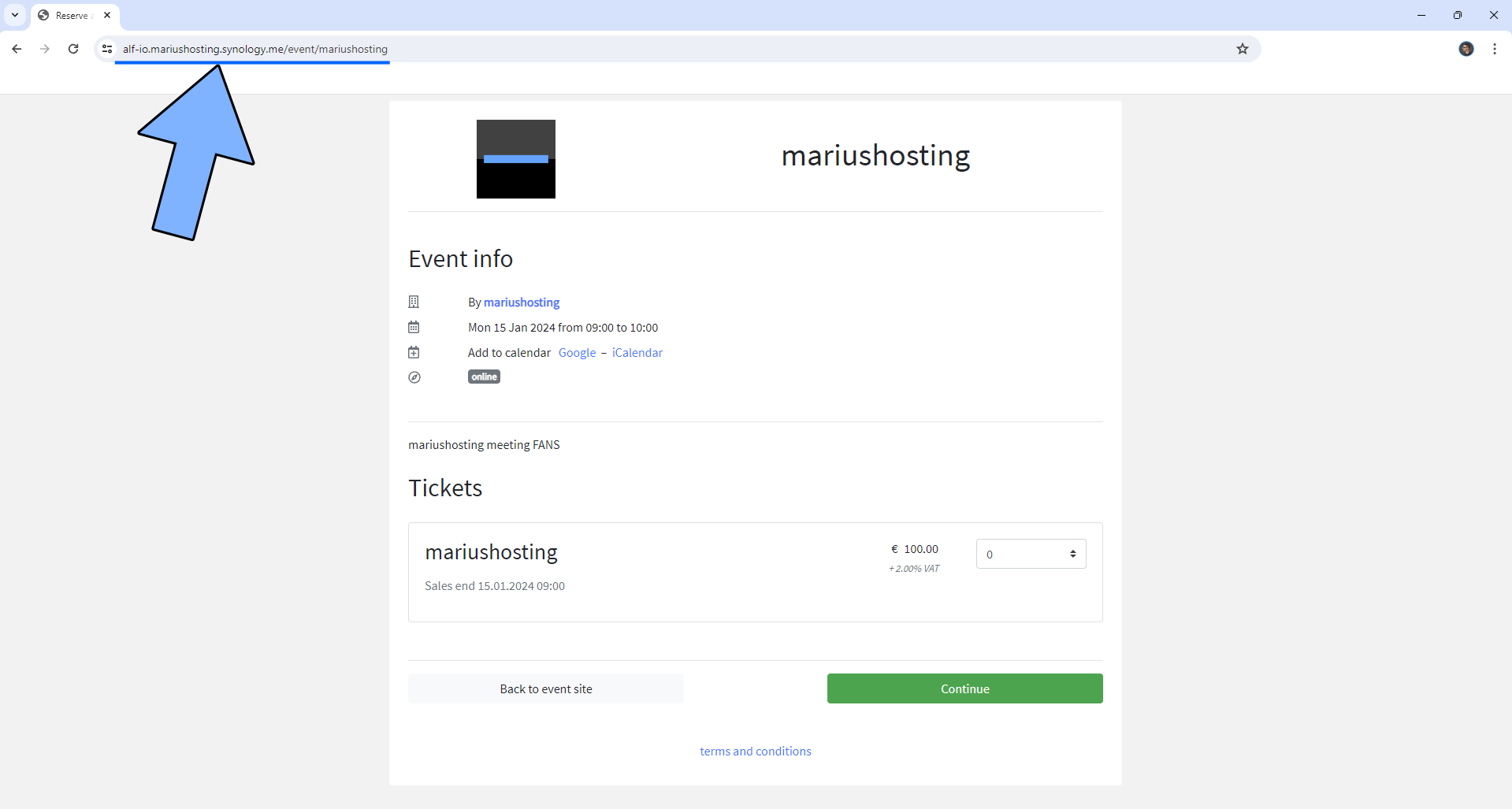
STEP 26
https://alf-io.yourname.synology.me/admin will be your admin dashboard page and https://alf-io.yourname.synology.me will be your events front page.
Enjoy Alf.io!
If you encounter issues by using this container, make sure to check out the Common Docker issues article.
Note: Find out how to update the Alf.io container with the latest image.
Note: How to Back Up Docker Containers on your Synology NAS.
Note: Can I run Docker on my Synology NAS? See the supported models.
Note: How to Free Disk Space on Your NAS if You Run Docker.
Note: How to Schedule Start & Stop For Docker Containers.
Note: How to Activate Email Notifications.
Note: How to Add Access Control Profile on Your NAS.
Note: How to Change Docker Containers Restart Policy.
Note: How to Use Docker Containers With VPN.
Note: Convert Docker Run Into Docker Compose.
Note: How to Clean Docker.
Note: How to Clean Docker Automatically.
Note: Best Practices When Using Docker and DDNS.
Note: Some Docker Containers Need WebSocket.
Note: Find out the Best NAS Models For Docker.
Note: Activate Gmail SMTP For Docker Containers.
This post was updated on Sunday / May 11th, 2025 at 10:33 AM

